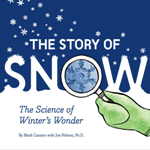 I was recently reminded that there’s a lot of fascinating reading in non-fiction if you only know how to find it. Non-fiction offers a different reading experience than fiction does. Where fiction affects your emotions and takes you on a journey (often tense, angsty, or deeply emotionally wrenching), non-fiction engages your mind with more intellectual fascination. Here are some non-fiction books I’ve read that offer various entry points into the genre.
I was recently reminded that there’s a lot of fascinating reading in non-fiction if you only know how to find it. Non-fiction offers a different reading experience than fiction does. Where fiction affects your emotions and takes you on a journey (often tense, angsty, or deeply emotionally wrenching), non-fiction engages your mind with more intellectual fascination. Here are some non-fiction books I’ve read that offer various entry points into the genre.
My top category is always science – I love Soul of an Octopus by Sy Montgomery, and What If (1 & 2) by Randall Munroe. I’ve also started on the works of Mary Roach, renowned for her approachable and entertaining forays into topics like death, sex, space, and most recently animal offenders in Fuzz. I’d say my love for scientific non-fiction (and fiction; my favorite author is Andy Weir after all) is because of my natural curiosity, since these books explore different realms of knowledge and the limits of what’s possible.
 My second-favorite nonfiction category is books by humorists like David Sedaris; I’ve read most of his work (for the title alone I particularly love Let’s Explore Diabetes With Owls) as well as other hilarious and relatable personalities. I remember loving Wow No Thank You by Samantha Irby.
My second-favorite nonfiction category is books by humorists like David Sedaris; I’ve read most of his work (for the title alone I particularly love Let’s Explore Diabetes With Owls) as well as other hilarious and relatable personalities. I remember loving Wow No Thank You by Samantha Irby.
 Another very common entry point into nonfiction is true crime books – I’m still working my way into this area but I have read In Cold Blood by Truman Capote (a classic and definitely fascinating) as well as The Professor and the Madman by Simon Winchester about the making of the Oxford English Dictionary and the convicted murderer who was an invaluable part of it.
Another very common entry point into nonfiction is true crime books – I’m still working my way into this area but I have read In Cold Blood by Truman Capote (a classic and definitely fascinating) as well as The Professor and the Madman by Simon Winchester about the making of the Oxford English Dictionary and the convicted murderer who was an invaluable part of it.
 Many people also love memoirs like Crying in H Mart (I’ll read it when I need to cry and not before, thank you) or poetry by breathtaking wordsmiths like Rupi Kaur (I tried Milk and Honey, and it made me feel raw, vulnerable and exposed so I decided to try again later), or powerful, expose-type social science reads. The power of the latter is in making you feel seen, or as if your eyes have been opened. For that reason I loved Ace by Angela Chen and highly recommend it.
Many people also love memoirs like Crying in H Mart (I’ll read it when I need to cry and not before, thank you) or poetry by breathtaking wordsmiths like Rupi Kaur (I tried Milk and Honey, and it made me feel raw, vulnerable and exposed so I decided to try again later), or powerful, expose-type social science reads. The power of the latter is in making you feel seen, or as if your eyes have been opened. For that reason I loved Ace by Angela Chen and highly recommend it.
The key in my experience is identifying what it is you value in a reading experience and seeking them out. For me, this includes infectious enthusiasm, a dry sense of humor, a sense of hope, and engrossing storytelling. Do you have something that immediately hooks you, or a favorite nonfiction read? Let us know below!











